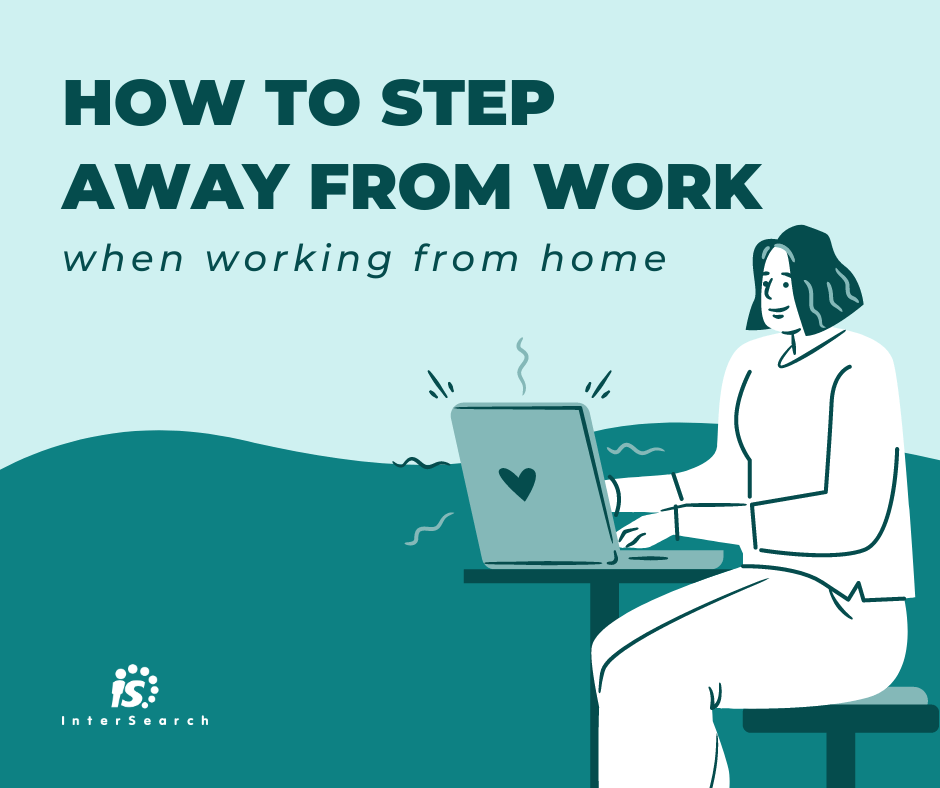HOW WE WILL WORK AFTER COVID-19
INTERSEARCH ASSOCIATES

Prior to COVID-19, some employers were hesitant to embrace remote work. Many managers feared it would lead to less effective communication and the added flexibility would lead to distracted, unproductive workers.
Following Stay-At-Home orders, businesses needed to adapt swiftly in order to remain functional. It took a few weeks to settle into a new workflow, but remote work quickly became a norm.
Now, as businesses slowly reopen, we anticipate that the workplace will operate a little differently. The businesses that take a proactive approach and have a well thought out plan in place ahead of time will be the most attractive to prospective employees.
Flexibility with work schedules
In order to support their staff, employers will need to accommodate various work schedules, and build in flexibility where they are able to. Of course, there will be some non-negotiable meeting times, but offering employees the ability to choose when to work from home, leave early, or come in late can help with their work-life balance. If they need to take care of responsibilities at home, they can rest easy that their job is not in jeopardy. This will become particularly attractive to employees with school age children, as experts are predicting regular school closures through the next school year.
It is important to think through what this looks like for your organization, and set expectations (and any restrictions) your specific company will put into place.
Cleanliness & Hygiene
All companies should implement specific protocols for personal hygiene and office space cleanliness. Expect to see additional signage in bathrooms, kitchens, and breakrooms as reminders to practice excellent hand hygiene. Social distancing and wearing a face covering is likely to become new workplace norms.
Communication with employees
Email is still the standard way to communicate in the workplace, although apps like Slack have become more popular in recent years, especially for teams. Without face-to-face interaction, it is more difficult to build connections between team members.
Remote teams will require more nurturing than in-person teams, but new norms can ensure each employee feels adequately supported. Suggesting video chats (over phone calls), instant messaging (over email), and regular check-ins through the day are a few ways to acclimate your team to remote work.
Managing virtual teams
Review your organization chart
Physically being in an office makes it easier to find help, even without a formal organizational chart. Knowing who to approach for assistance can become more difficult when working remotely if there isn’t a clear hierarchy. This is an ideal time to engage every department by identifying their resources on an organizational chart. Be sure to then make it easily accessible to all employees.
Utilize technology
Tracking employee’s work progress and daily results alleviates the micro-manager syndrome which many managers fear when employees are out of sight. It may be worth making a phone call to your software vendor to fully discover tools you may not be utilizing yet available. There are many project management tools such as Asana, ClickUp, and Monday.com that may be helpful to keeping your team on track. These tools can increase productivity, communication, as well as track the work progress of your team members.
Evaluate and adjust
Are performance incentives aligned with the new work challenges? Adjusting to a new norm may mean that production goals may need to be adjusted along with incentives. If the new environment is contributing to slower progress, get creative with ways to incentivize your team to meet your production goals.
Find the fun
Working remotely can be desirable, as it offers a lot of flexibility. But there are drawbacks to not working in-person. The camaraderie, friendly competition, relationship building, and even simple chats at the water cooler during a quick break are what makes employees feel like they are part of the team. Intentionally look for ways to incorporate fun into the workweek. For large teams, consider a weekly game via video chat, or a company-hosted virtual happy hour. For small teams, cookie delivery is an easy crowdpleaser or DoorDash lunch delivery to each team member and hop online to chat while you eat together.
Reduction of leased office space
As remote work ramps up, the need for large offices will be reduced. Some companies may take shifts for their time spent in the office, cutting down their need for space by half or more. Alternatively, businesses may prioritize which job cannot be done effectively at home, and only require those employees to work from the office.
In turn, employees will need to carve out office spaces in a spare bedroom or a repurposed corner of their home. Homebuilders may look to draft floorplans with space to intentionally accommodate a home office in the coming years.
Technology advancements
A laptop computer, quality video camera, and high-speed internet are all necessities to working from home effectively. Portability is important in equipment, so work can be done on the go.
The popular video chat service Zoom saw immediate increases in the use of their program, following the COVID-19 outbreak. They were met with several security challenges but acted quickly to patch the issues. Innovative technology companies that make doing business easier or faster will thrive during this time.
Technology advancements
If these are new aspects to your company culture, employees may feel apprehensive about utilizing them. As a manager, intentionally look for ways to encourage your employees to take advantage of the options available.






CONTACT US
FIND US ONLINE
Connect with us on Facebook and LinkedIn
LET'S TALK
Contact Us - Home Page
We will get back to you as soon as possible.
Please try again later.
ALL RIGHTS RESERVED | INTERSEARCH ASSOCIATES | PRIVACY




